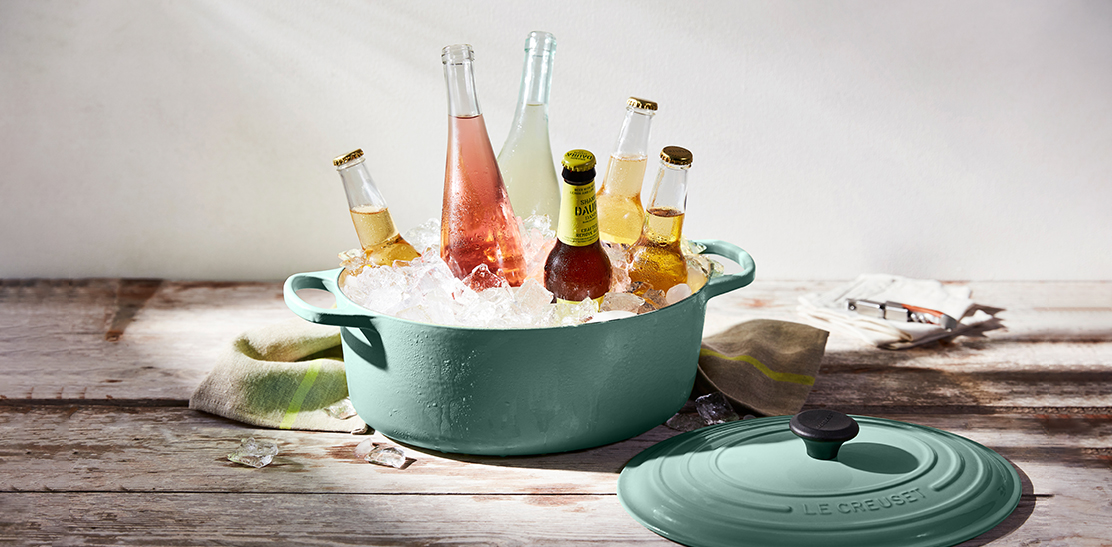
The Dutch Oven is typically associated with wintertime cooking due to its ability to simmer soups and hearty stews to perfection. This iconic piece of cookware, however, is extremely versatile and is equally suited to meal preparation when temperatures begin to rise.
As the weather gets warmer and hearty stews make way for lighter meals, you can still make use of your Dutch Oven. With temperatures rising you may not be craving hearty stews or soups but that doesn't mean you should store your Dutch Oven away for the summer. Whether it is being used to mix a fresh summer salad, or to braise delicious pulled-pork sandwiches for your first BBQ of the season, the Dutch Oven has a lot to offer. Plus, when it is not being used to prepare delicious meals for the whole family, it serves a number of alternative purposes.
From being used as a cooler for refreshments, or as a colourful pitcher for sangria, there is not much the Dutch Oven can’t accommodate. Here are seven reasons why you need to add a Dutch Oven to your kitchen setup this summer.
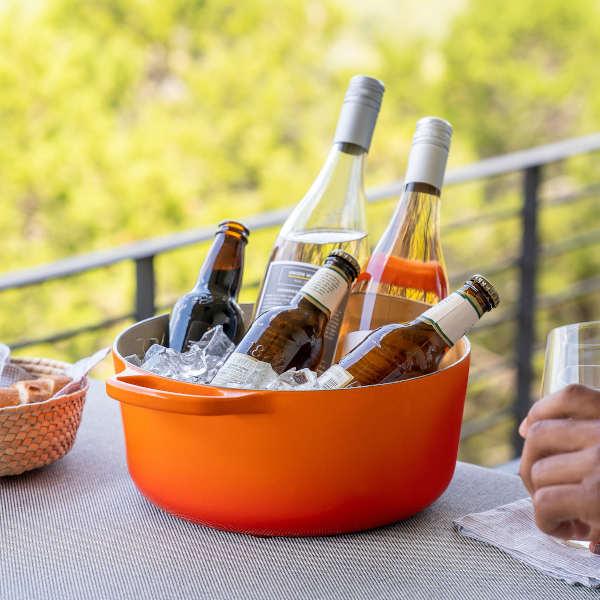
Use it as a punch bowl or as an ice cooler
The Dutch Oven makes for an impromptu cooler for those warmer days and can be used to keep your favourite beverages cold for longer. Simply fill up this iconic piece of cookware with ice and the Dutch Oven will take care of the rest. Available in nine different sizes ranging from 0.9L to 12 L, this versatile pot accommodates both big and small bottles as well as lots of ice.
This luxury piece of cookware also doubles as a stylish pitcher. The Dutch Oven’s high walls provide the ideal environment to mix drinks, including a perfectly balanced sangria. Impress your guests this summer and serve refreshing drinks directly from your Dutch Oven! Just throw in a ladle and get serving.
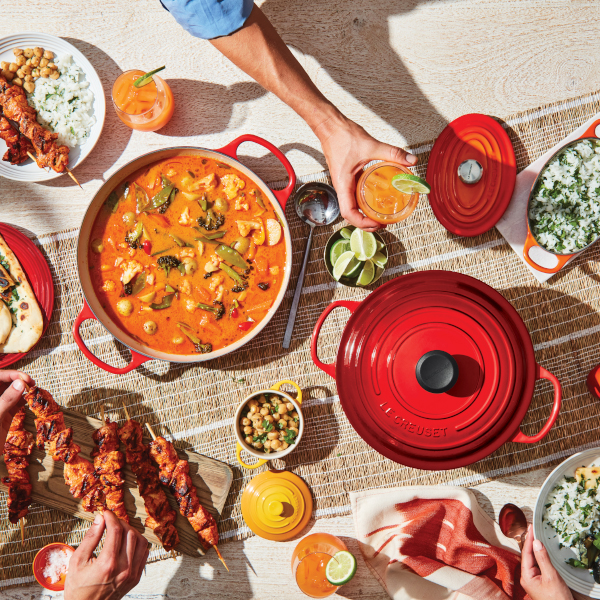
Serve recipes directly out of it
The Dutch Oven makes for a stylish serving dish and is the perfect piece of cookware to host your guests in style. Available in 11 different colours, this iconic piece of cookware can be used to contrast or compliment your existing kitchen decor, doubling as a bold centrepiece for your dinner table.
Using the Dutch Oven as serveware also minimizes clean-up, reducing the need for additional dishes. While this versatile pot may be known for its ability to prepare delicious meals for the whole family, it simplifies meal preparation, ensuring lunch can lunch can be prepared and served all in one pot. Its tight-fitting lid will lock in heat, ensuring your meal stays warm well after it is ready.

Transporting dishes to and from summer potlucks and picnics
The Dutch Oven is excellent for serving and storing picnic salads, ensuring your coleslaw, potato salad or Caesar salad stays cool and ready to eat. This iconic piece of cookware is commonly associated with hearty stews and soups during the cold winter months, but is also ideal for transporting easy, one pot meals that need to stay warm or cold on the go.
Featuring a tight-fitting lid to keep ingredients safe when travelling, the Dutch Oven is a great piece of cookware to bring to a summer potluck. This piece of cookware has excellent heat retention properties, creating the perfect environment for your colder dishes to remain cool for hours at a time.
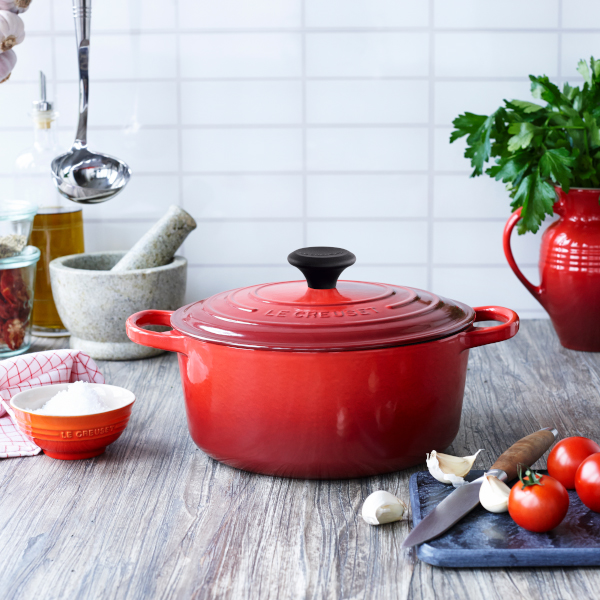
Use it as cold storage
The Dutch Oven can even be used to store desserts and colder dishes in the refrigerator with ease, including pasta salads and layered cakes. Built with enamelled cast iron, this versatile piece of cookware is crafted to withstand extremes on both ends of the spectrum and can handle freezing temperatures.
The Dutch Oven can go from the refrigerator to the tabletop with ease, without the fear of chipping, cracking, or thermal shock. After using it on the stovetop or in the oven, be sure to let the Dutch Oven reach room temperature before storing it in the refrigerator.
A sudden change in temperature from hot to cold can lead to a crack to the enamel. This also applies when cleaning the Dutch Oven. Never plunge this versatile pot in cold water directly after cooking!
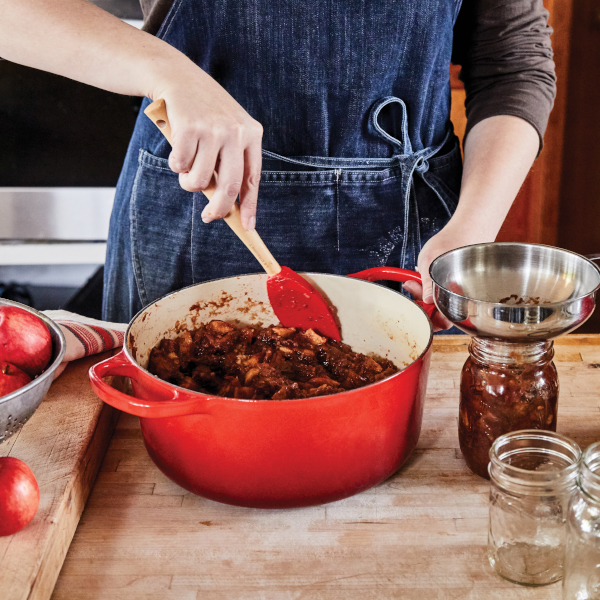
Use it for canning
Canning helps you capture the best flavours of the season all-year round and is typically done in the summertime following a fruitful harvest. The Dutch Oven can be used to cook the preserves before being store in a tight-fitting mason jar. Whether you are preserving fresh summer berries, or sweet tomatoes, the Dutch Oven is the ideal piece of cookware to prepare the preserves.
Its tight-fitting lid is designed to lock in heat and moisture, ensuring your preserves are cooked to perfection. The Dutch Oven can also be used to boil the jars to seal them before storing away your ingredients well beyond the warm summer months. Common ingredients that are canned are fruits, vegetables, tomatoes, meat, poultry, seafood, jams and jellies, as well as pickles and fermented vegetables.
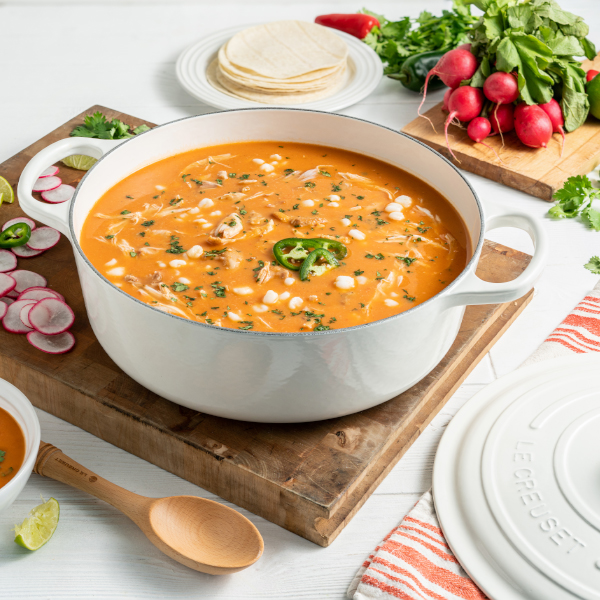
Tackle a Variety of Recipes
The Dutch Oven is among the most versatile pieces of cookware available, accommodating a variety of cooking techniques. While it is a slow-cooking pot by nature, the Dutch Oven serves a number of other purposes, including braising, baking, sautéing, searing, and boiling.
Its tight-fitting lid and thick enamelled cast iron walls lock in heat and moisture, creating a self-basting cycle to tenderize food. Crafted with enamelled cast iron, the Dutch Oven exposes ingredients to a consistent heat source, providing superior heat retention and even heat distribution
The Dutch Oven has often been dubbed the original multi-cooker pot due to its versatility, and with good reason. This versatile piece of cookware can help you tackle a variety of new recipes this summer all within one pot. Read our guide to the eight essential Dutch Oven cooking techniques and start preparing delicious meals with ease.
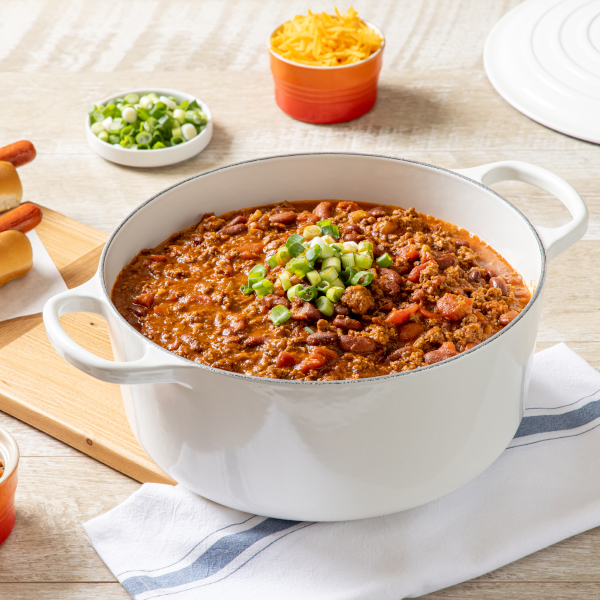
Set-it-and-forget-it
The last thing you want to do on a hot summer day is be stuck inside, cooking over a hot stove or oven. The Dutch Oven embodies the set-it-and-forget-it nature of cooking, eliminating the need for constant monitoring. Its thick walls, tight-fitting lid, and shallow base create the ideal environment for ingredients to slow-cook to perfection, gradually infusing new flavours into the dish.
Featuring a sand-coloured enamel, the Dutch Oven also ensures you can easily monitor cooking progress. Summertime is rife with fun outdoor activities for the whole family, including pool parties and BBQs. Rather than hover over the stove this summer, our Dutch Oven does the hard work while you sit back, relax, and make summer memories with your friends and family. Simply set the Dutch Oven on low heat and let it simmer until your meal is ready to serve.
Dutch Oven vs. French Oven
Dutch Oven and French Oven are often used interchangeably given their similarities, however, they have one key difference. The latter elevated the traditional Dutch Oven design from the 18th century, replacing the pure cast iron with enamelled cast iron. It is also commonly referred to as a Cocotte.
Getting Ready for Summer with a Dutch Oven
The Dutch Oven may have established itself as a kitchen workhorse since its inception in 1769 and has shown no signs of going anywhere. This versatile pot is equally suited for both beginner and seasoned-chefs alike, slow-cooking ingredients wonderfully.
The Dutch Oven also serves a variety of unique purposes that go well beyond cooking, ensuring it can be used all-year round, including in the summertime. Whether this iconic piece of cookware is being used as a colourful ice cooler, punch bowl, or to store delicious salads on route to a picnic, it has you covered.
These were just seven reasons why we think everyone should have a Dutch Oven heading into the summer. For more inspiration on how to make the most of your Dutch Oven, visit our blog today and let us know what you might use this versatile piece of cookware for!
